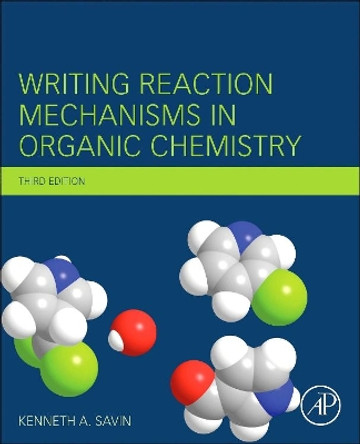Description
Teaches and enables students to build confidence in drawing and manipulating curly arrows, a fundamental skill for all organic chemists
This book is an interactive approach to learning about chemistry of the carbonyl group-inviting students to work through its pages with pencil and paper in hand. It educates with the belief that the most effective way to learn is by practice and interaction. With this in mind, the reader is asked to predict what would happen under a specific set of reaction conditions. The book is divided into frames: each frame poses a question and invites the reader to predict what will happen. Subsequent frames give the solution but then pose more questions to develop a theme further.
Chemistry of the Carbonyl Group: A Programmed Approach to Organic Reaction Mechanisms, Revised Edition provides a solid grounding in the fundamental reactions of carbonyls. Presented in full colour to enhance the understanding of mechanisms within chemistry, the chapters of this step-by-step guide cover: nucleophilic addition to the carbonyl group; nucleophilic substitution; nucleophilic substitution at the carbonyl group with complete removal of carbonyl oxygen; carbanions and enolisation; and building organic molecules from carbonyl compounds.
- A must-have book for undergraduate chemists to emphasise understanding in carbonyl group chemistry
- Goes through all the stages of basic carbonyl chemistry, detailing even the simplest mechanisms
- A step-by-step learning guide to synthetic chemistry for the first year of a chemistry degree, with all the information needed for independent learning
- Provides a solid grounding in the fundamental reactions of carbonyls which will inform the understanding of many other organic chemistry reactions
Chemistry of the Carbonyl Group: A Programmed Approach to Organic Reaction Mechanisms - Revised Edition is packed with all the information on synthetic chemistry that every first-year student will need in order to learn independently.
About the Author
TIMOTHY K. DICKENS, FRSC, is Official Fellow, College Lecturer and Director of Studies in Chemistry at Peterhouse, Cambridge. Dr Dickens graduated from the University of Kent in 1982, and, after two years' research at Oxford, he joined Glaxo where he spent 24 years in both scientific and technology senior roles. In 2008, he joined the University of Cambridge, where his research has focused on Ring Currents in conjugated systems.
STUART WARREN, PHD, is the author of the textbooks Organic Chemistry, Organic Synthesis: The Disconnection Approach and Organic Synthesis. He retired from Churchill College, Department of Chemistry, University of Cambridge in 2006, having fostered some of the most successful organic chemistry academics in the UK.
Book Information
ISBN 9781119459569
Author Timothy K. Dickens
Format Paperback
Page Count 192
Imprint John Wiley & Sons Inc
Publisher John Wiley & Sons Inc
Weight(grams) 272g
Dimensions(mm) 213mm * 137mm * 13mm









